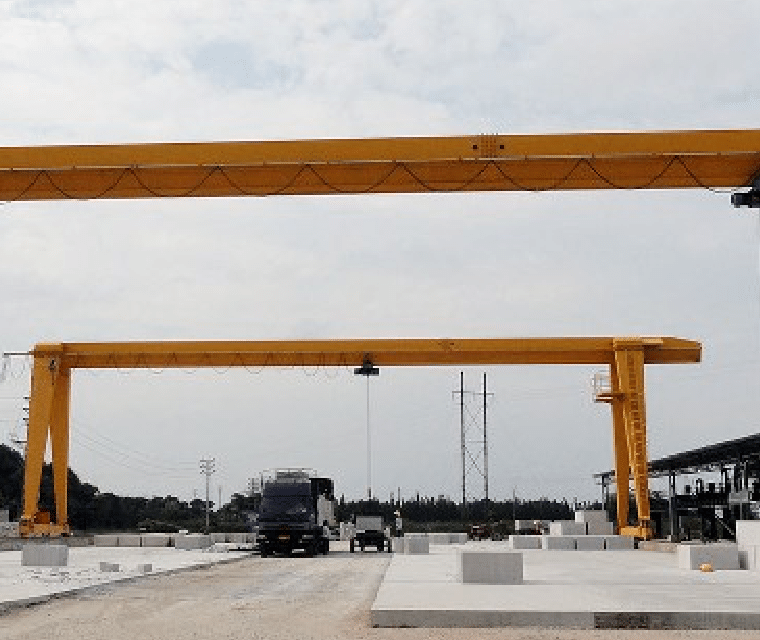In a factory setting, Electrical Chain Hoists really are a must-have. Perfect for providing vertical lifts, electric chain hoists are quite obvious as well as simple to use. This may cause them a stylish selection for business people.

However, precisely what is less than easy will be the task of deciding on the best hoist for your needs. The marketplace is currently flooded which has a large number of products, many of which are subpar offerings. With all manufacturers claiming the most notable spot, it can become challenging to settle on the right choice.
That is why, to be sure that you don't get it wrong, we've gone ahead and compiled this whole guide to choosing electric chain hoists for your use. After you glance at the guide below, you have little difficulty understanding which product you should purchase.
But let's start at the start and make things right on what an electric powered Chain Hoist is.
Precisely what is a power Chain Hoist?
Quite simply, an electric powered chain hoist is a device that's useful for vertically lifting and lowering any materials. The hoist contains an electric motor using a brake, Gearbox, Load Chain wheel along with a controller, which are utilized to control the motions of the system. The lifting element used is the Alloy Steel Chain.
These kinds of hoists are ideal in factories and machine shops, which require fast lifting and loading of products.
Things to consider in choosing Electric Chain Hoists
Selecting the best chain hoist is probably the essential prerequisites to get a safe and efficient workshop environment. Listed here are a number of the key factors that must be considered when scouting for the correct product.
The Weight with the load: This can be the first and quite a few important aspect that you need to consider in choosing electric chain hoists. The load that you will be lifting will determine the kind of hoist that you need to buy. As a general rule of thumb, for under ten a great deal of lifting capacity, a series hoist is preferred. However, for lifting greater weights, an electrical wire hoist is acceptable. However, this doesn't hold with good lifting height. So, according to your industry needs and requirements, the option of hoists vary.
Application Requirement: Once you have determined the load type, you should find out the application to which you will be putting the hoist. Consider this: Are you going to use it for product assembly? If you do, then extreme precision is really a prerequisite. Also important is usually to know if you're using any devices under the hook. Or exactly what are your duty cycles?
Lifting Speed: Another key to consider may be the lifting speed, which has to be carefully calibrated for the proper loading and unloading of the materials being lifted.
The project Environment: Perhaps more vital than lift speed could be the environment where your hoist will likely be used. Factory environments may be abrasive for machinery, and it's important to understand the impact the workplace will have on your equipment. For instance, if your hoist is employed in extremely high-temperature environments, this can cause gearbox leakage and related hoist malfunctions. Similarly, shallow temperatures might cause cracks to formulate or internal components to freeze. Setting where there are extreme temperature swings can be detrimental towards the operation of one's hoist. Frequent temperature changes can result in electrical short circuits and associated equipment malfunction.
The job Cycle: Therefore time that your hoist will probably be used. The quantity of hours how the hoist will operate at a stretch can impact the robustness of the machine. The length of the job cycle is essential as electrical hoists need to dissipate heat through the motors. What this means is they must be given sufficient downtime to cool and recover. Otherwise, you might try to be inviting equipment malfunctions.
The Height From the Lift: The height this agreement you have to lift the load also plays a significant part from the choice of the hoist. Usually, electric chain hoists possess a container in which the excess chain is spooled. Naturally, the greater the height, the more the chain, which means a larger chain container. Or else designed properly, a too-large container might actually act as a blockage for the load being lifted. A power Chain hoist is often a preferred selection for higher lifting height, e.g. windmill hoist for turbine maintenance.
The electricity Source: The kind of hoist you need will even determine the kind of source of energy that you need to use. For low-duty cycle applications, a single-phase hoist will do. If, however, you will need extremely high-duty cycles, then its best to buy a three-phase hoist. This will make sure that you have adequate power for that machine's operation.
Warranty: As far as machines go, an electrical hoist is one of the ones that undergo the usual wear. Hence, in order to avoid repair costs, you have to obtain a product which has attractive warranty features. Make sure that the hoist warranty covers all essential parts and labour. Usually, labour is more costly than parts, so it's best if the warranty includes both included.
Precautionary features: After your day, an electrical hoist is a machine. As well as in any setting where electrical equipment is being used, accidents can take place. This is exactly why, when purchasing the hoist, ensure they have all essential safety features, such as load limiters. Also essential are self-adjusting brakes and thermal overload protection.
For more information about Overhead Cranes go to the best webpage
